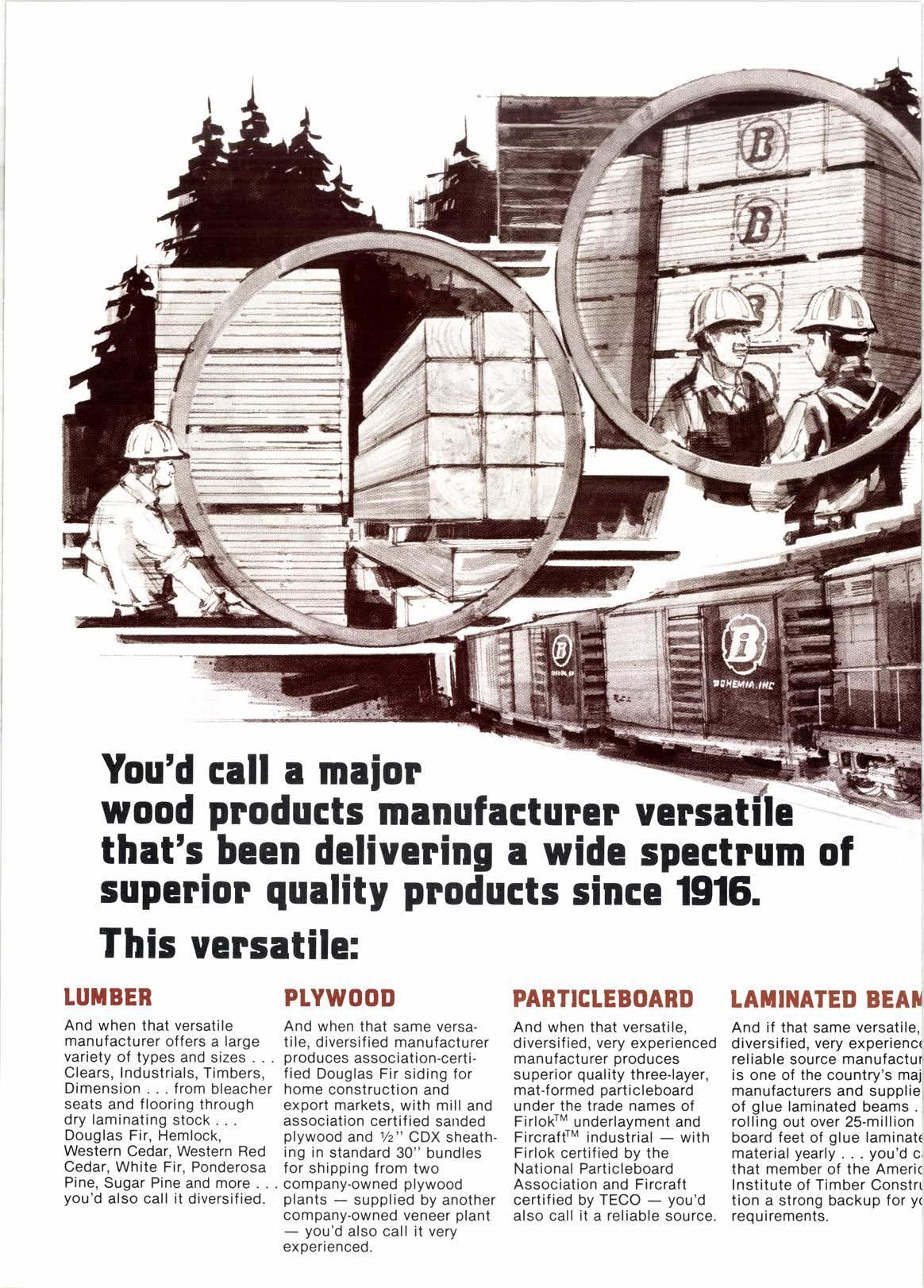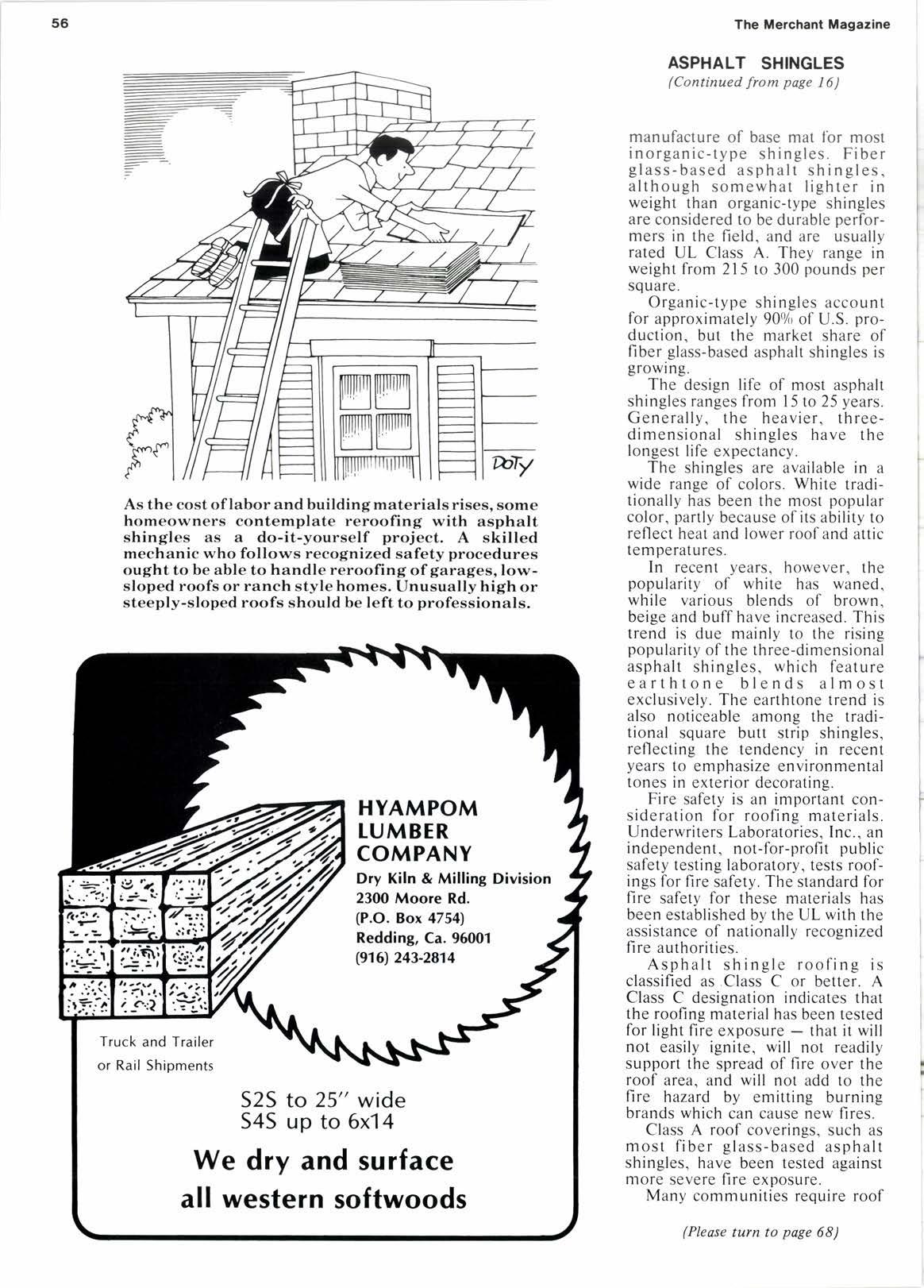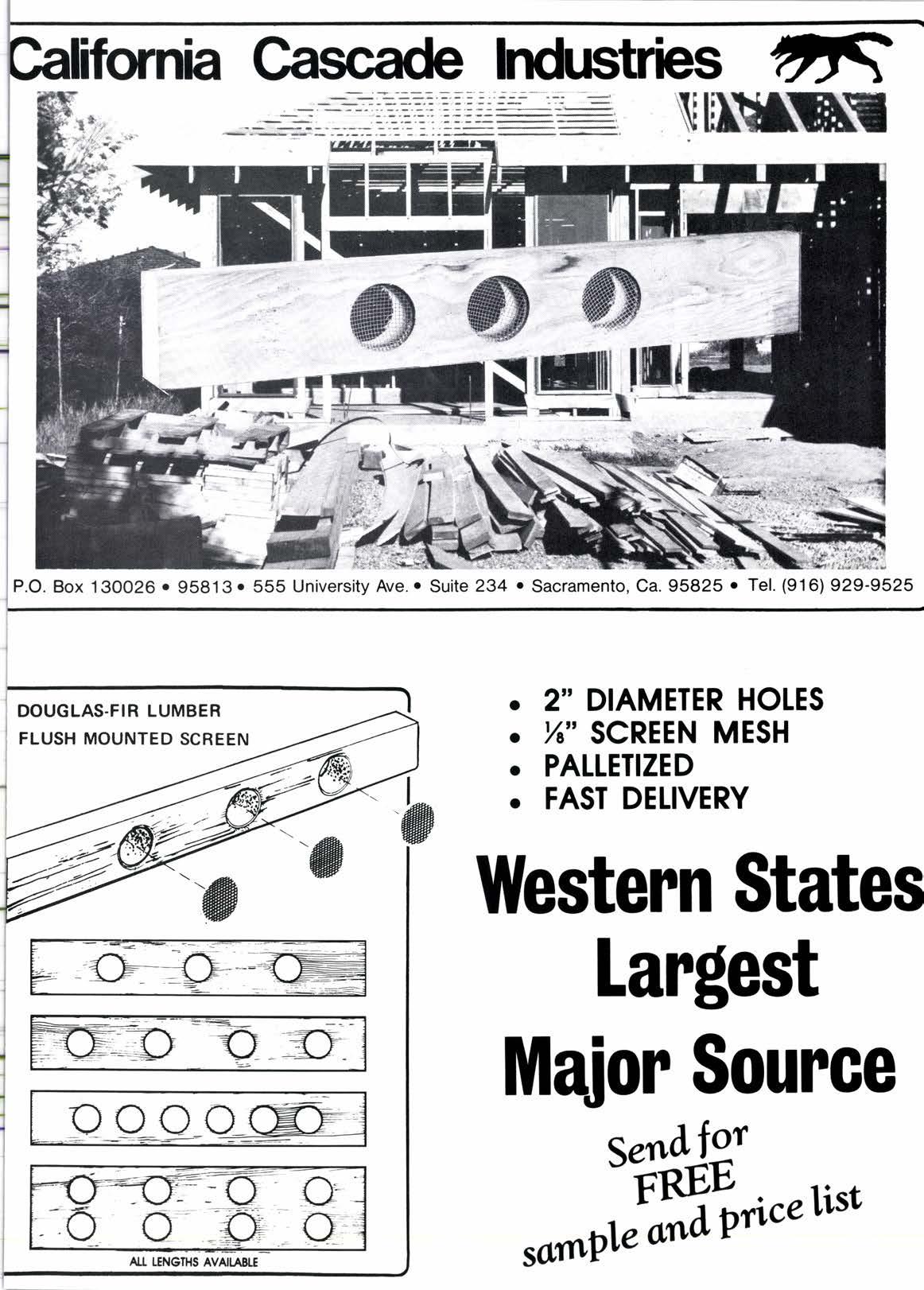
2 minute read
You'd call a maion
This uersatile: LU]IIBEB PLYWOOD
Particleboard
LAMI]IATEII BEAI/
And when that versatile d because that perienced, reliable source has earned a worldwide utation for delivering on time, as promised, you'd ll it. Today.
And when that same versamanufacturer offers a large tile, diversified manufacturer variety of types and sizes . . produces association-certiClears, Industrials, Timbers, fied Douglas Fir siding for Dimension . . . from bleacher home construction and seats and flooring through export markets, with mill and dry laminating stock . . association certified sanded Douglas Fir, Hemlock, plywood and Vz" CDX sheathWestern Cedar, Western Red ing in standard 30" bundles Cedar, White Fir, Ponderosa for shipping from two Pine, Sugar Pine and more company-owned plywood you'd also call it diversified. plants - supplied by another company-owned veneer plantyou'd also call it very experienced.
And when that versatile, diversif ied, very experienced manufacturer produces su perior qual ity three-layer, mat-formed particleboard under the trade names of FirlokrM underlayment and FircraftrM industrialwith Firlok certified by the National Particleboard Association and Fircraft certified by TECOyou'd also call it a reliable source.
And if that same versatile, diversified, very experienct reliable source manufactui is one of the country's maj manufacturers and suppliel of glue laminated beams .; rolling out over 25-million board feet of glue laminat( material yearly . . . you'd c, that member of the Americ lnstitute of Timber Constrr tion a strong backup for yr requirements.
You'd also call it Bohemia. So call it.

As the cost of labor and building materials rises, some homeowners contemplate reroofing with asphalt shingles as a do-it-yourself project. A skilled mechanic who follows recognized safety procedures ought to be able to handle reroofing of garages, lowsloped roofs or ranch style homes. Unusually high or steeply-sloped roofs should be left to professionals.
Asphalt Shingles
(Continued from page 16) manufacture of base mat fbr most inorganic-type shingles. Fiber glass-based asphalt shingles, although somewhat lighter in weight than organic-type shingles are considered to be durable performers in the field, and are usually rated UL Class A. They range in weight from 215 to 300 pounds per square.
Organic-type shingles account for approximately 9004 of U.S. production. but the market share of fiber.glass-based asphalt shingles is growlng.
The design life of most asphalt shingles ranges from 1 5 to 25 years. Generally, the heavier, threedimensional shingles have the longest life expectancy.
The shingles are available in a wide range of colors. White traditionally has been the most popular color, partly because of its ability to reflect heat and lower roof and attic temperatures.
In recent years, however, the popularity of white has waned, while various blends of brown, beige and buff have increased. This trend is due mainly to the rising popularity of the three-dimensional asphalt shingles, which feature earthtone blends almost exclusively. The earthtone trend is also noticeable among the traditional square butt strip shingles, reflecting the tendency in recent years to emphasize environmental tones in exterior decorating.
Fire safety is an important consideration for roofing materials. Underwriters Laboratories. Inc.. an independent, not-for-profit public safety testing laboratory, tests roofings for fire safety. The standard for fire safety for these materials has been established by the UL with the assistance of nationally recognized fire authorities.
Asphalt shingle roofing is classified as .Class C or better. A Class C designation indicates that the roofing material has been tested for light fire exposurethat it will not easily ignite, will not readily support the spread of fire over the roof area. and will not add to the fire hazard by emitting burning brands which can cause new fires.
Class A roof coverings, such as most fiber glass-based asphalt shingles, have been tested against more severe fire exposure.
Many communities require roof (Please turn to page 68)












